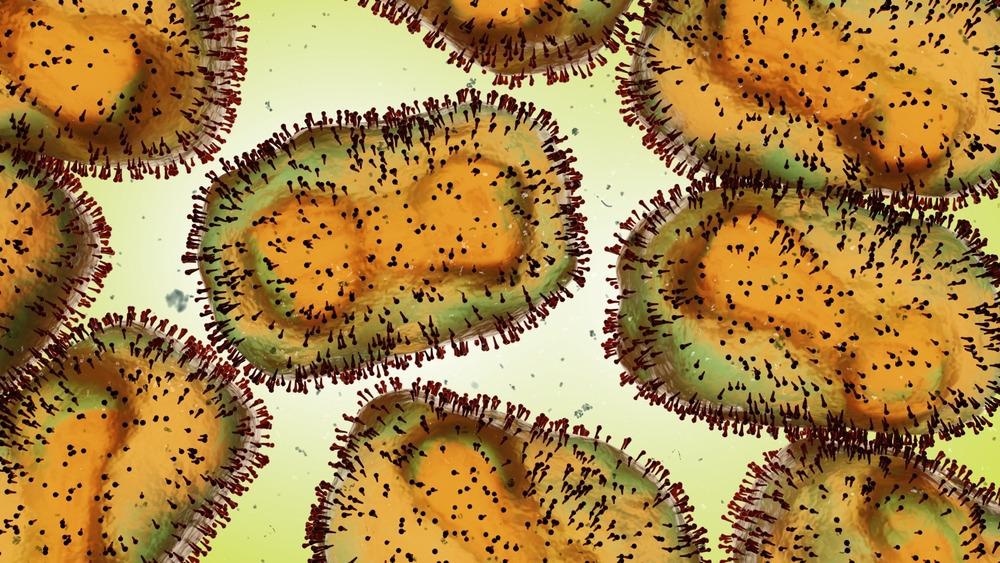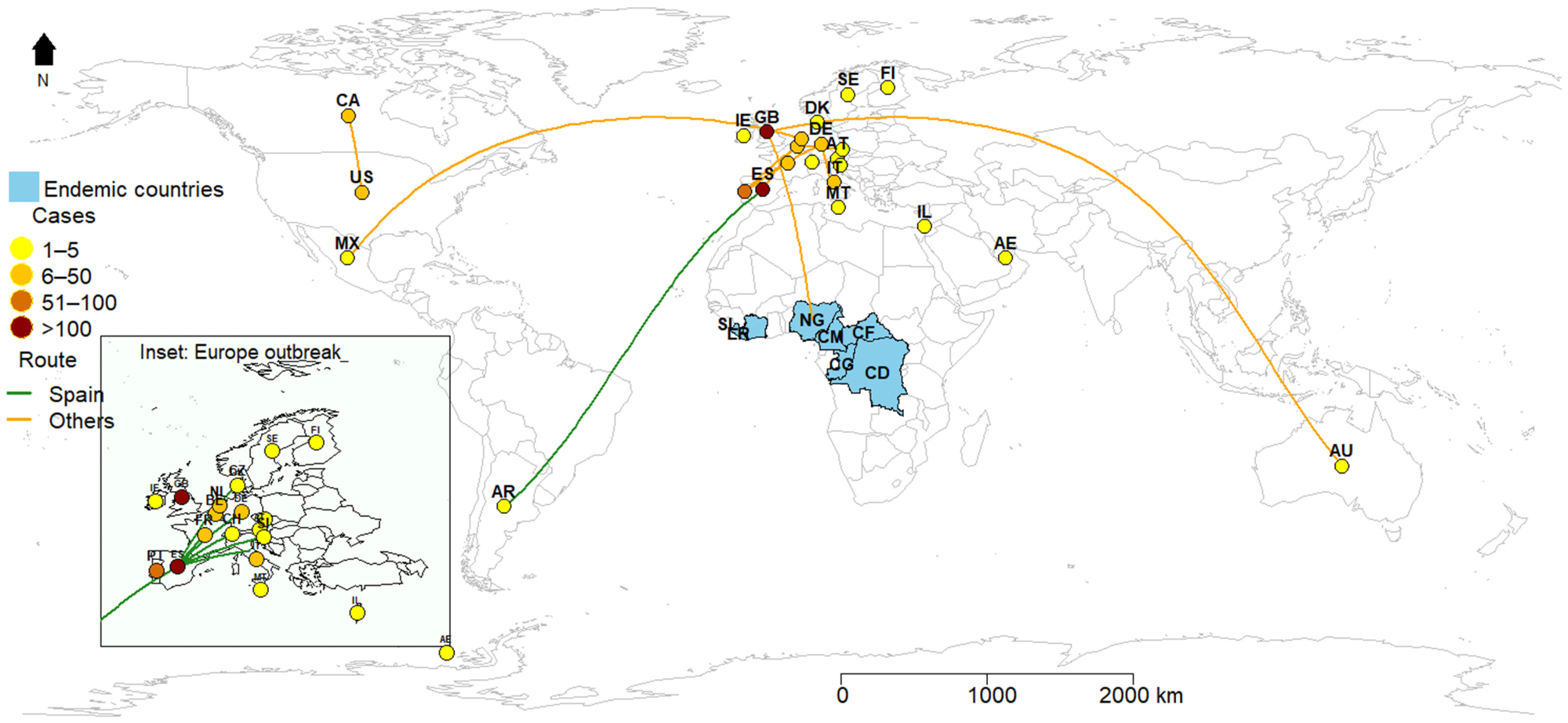In a recent Viruses study, scientists at James Cook University, Australia, describe the global prevalence and significance of the current monkeypox virus outbreak.

Study: Travel-Related Monkeypox Outbreaks in the Era of COVID-19 Pandemic: Are We Prepared? Image Credit: Dotted Yeti / Shutterstock.com
Discovery of monkeypox virus
The monkeypox virus is a rare zoonotic virus that causes smallpox-like symptoms in humans. The virus was first detected in humans in 1970 in the Democratic Republic of the Congo, Africa.
Soon after the outbreaks of monkeypox infections were reported in Nigeria in 2017, several monkeypox cases were detected outside of Africa that have been attributed to travel-related transmission. Taken together, 49, 47, eight, 34, and 21 sporadic cases of monkeypox have been reported in Nigeria in 2018, 2019, 2020, 2021, and 2022, respectively.
The current monkeypox outbreak
The first outbreak of monkeypox infection outside of Africa was identified in the U.S. in 2003. Afterward, no confirmed cases were detected outside of Africa until 2018. Between 2018 and 2022, a total of 11 travel-related monkeypox cases were identified in the U.K., Singapore, Israel, and the U.S.
Since April 2022, several countries throughout Europe, as well as the United Kingdom, Australia, and the United States have reported outbreaks of monkeypox infection. Although these cases do not appear to be directly related to travel from endemic regions, the initial imported case in each nation originated from Nigeria.
As of June 16, 2022, over 1,300 cases of monkeypox infection have been reported in 28 different countries across the world. Since the discovery of monkeypox infection in 1970, this is the largest number of cases to ever be reported outside of Africa.
 Geographical distribution of the ongoing monkeypox virus (MPXV) outbreaks. MPXV endemic countries have had sporadic epidemics since 2017. Nigeria (15), Cameroon (3), Central African Republic (8), Democratic Republic of Congo (1238), Sierra Leone (0). Note: Non-endemic countries: Argentine (AR), Australia (AU), Austria (AT), Belgium (BE), Canada (CA), Czech Republic (CZ), Denmark (DK), Finland (FI), France (FR), Germany (DE), Ireland (IE), Israel (IL), Italy (IT), Malta (MT), Mexico (MX), The Netherlands (NL), Portugal (PT), Slovenia (SI), Spain (ES), Sweden (SE), Switzerland (CH), United Arab Emirates (AE), UK (GB), USA (US). Endemic countries: Cameroon (CM), Central African Republic (CF), Democratic Republic of the Congo (CD), Liberia (LR), Nigeria (NG), the Republic of the Congo (CG) and Sierra Leone (SL).
Geographical distribution of the ongoing monkeypox virus (MPXV) outbreaks. MPXV endemic countries have had sporadic epidemics since 2017. Nigeria (15), Cameroon (3), Central African Republic (8), Democratic Republic of Congo (1238), Sierra Leone (0). Note: Non-endemic countries: Argentine (AR), Australia (AU), Austria (AT), Belgium (BE), Canada (CA), Czech Republic (CZ), Denmark (DK), Finland (FI), France (FR), Germany (DE), Ireland (IE), Israel (IL), Italy (IT), Malta (MT), Mexico (MX), The Netherlands (NL), Portugal (PT), Slovenia (SI), Spain (ES), Sweden (SE), Switzerland (CH), United Arab Emirates (AE), UK (GB), USA (US). Endemic countries: Cameroon (CM), Central African Republic (CF), Democratic Republic of the Congo (CD), Liberia (LR), Nigeria (NG), the Republic of the Congo (CG) and Sierra Leone (SL).
Genome sequencing of identified monkeypox cases
During the 2017 and 2018 outbreaks, genomic analysis of ten monkeypox-positive samples was conducted to better understand its origin. Specifically, five local cases from Nigeria, four exported cases from the U.K., Singapore, and Israel, as well as one hospital-related transmission case within the U.K., were subjected to genomic analysis.
The genomic analysis findings indicated that the exported cases were associated with the West African clade. Furthermore, these cases shared a common ancestor with a local case in Nigeria with a travel history to three Nigerian states of Bayelsa, Delta, and Rivers State.
Comparatively, the genomic analysis conducted during the current multi-country outbreak indicates that the circulating monkeypox strain belongs to the West African clade. Furthermore, this strain is closely related to that which was exported from Nigeria during the 2018 and 2019 outbreaks.
The monkeypox cases that have been isolated in the current outbreak do not have a travel history to endemic regions and, as a result, are not epidemiologically linked to West or Central Africa. This indicates that monkeypox infection has become topical and community transmission of the infection is now possible in non-endemic regions.
Impact of COVID-19 on monkeypox outbreak
The first case of coronavirus disease 2019 (COVID-19) was detected in Nigeria in March 2020. Given the severity of COVID-19, researchers and public health agencies worldwide have focused on monitoring the spread of COVID-19.
Despite the necessity of these measures to mitigate the current pandemic, this hyperfixation of COVID-19 leads to a lack of surveillance and monitoring of monkeypox cases in Nigeria. Furthermore, the number of people seeking medical attention for monkeypox infection has also declined considerably due to the fear of contracting COVID-19. Collectively, these factors have increased the prevalence and risk of monkeypox globally.
Given that most countries are now relaxing COVID-19-related restrictions, the rising cases of monkeypox is becoming a global health concern. Some of the factors that may increase the risk of monkeypox outbreaks include declining cross-protection from smallpox vaccines, increased exposure to wild animals, and consumption of animal meat, as well as a lack of knowledge and information about monkeypox.
How to prevent a monkeypox outbreak
To manage the current outbreak, the monkeypox virus has been incorporated into Nigeria’s Integrated Disease Surveillance and Response System (IDSR). Nevertheless, expanding current monitoring and detection protocols is required in both endemic and non-endemic countries.
To date, there is no treatment available against monkeypox infection. Thus, the JYNNEOS vaccine that is currently approved in the United States for monkeypox and smallpox should be deployed globally as a preventive measure, particularly in high-risk populations.
Journal reference:
- Adegboye, O. A., Castellanos, M. E., Alele, F. O., et al. (2022). Travel-Related Monkeypox Outbreaks in the Era of COVID-19 Pandemic: Are We Prepared? Viruses. doi:10.3390/v14061283.